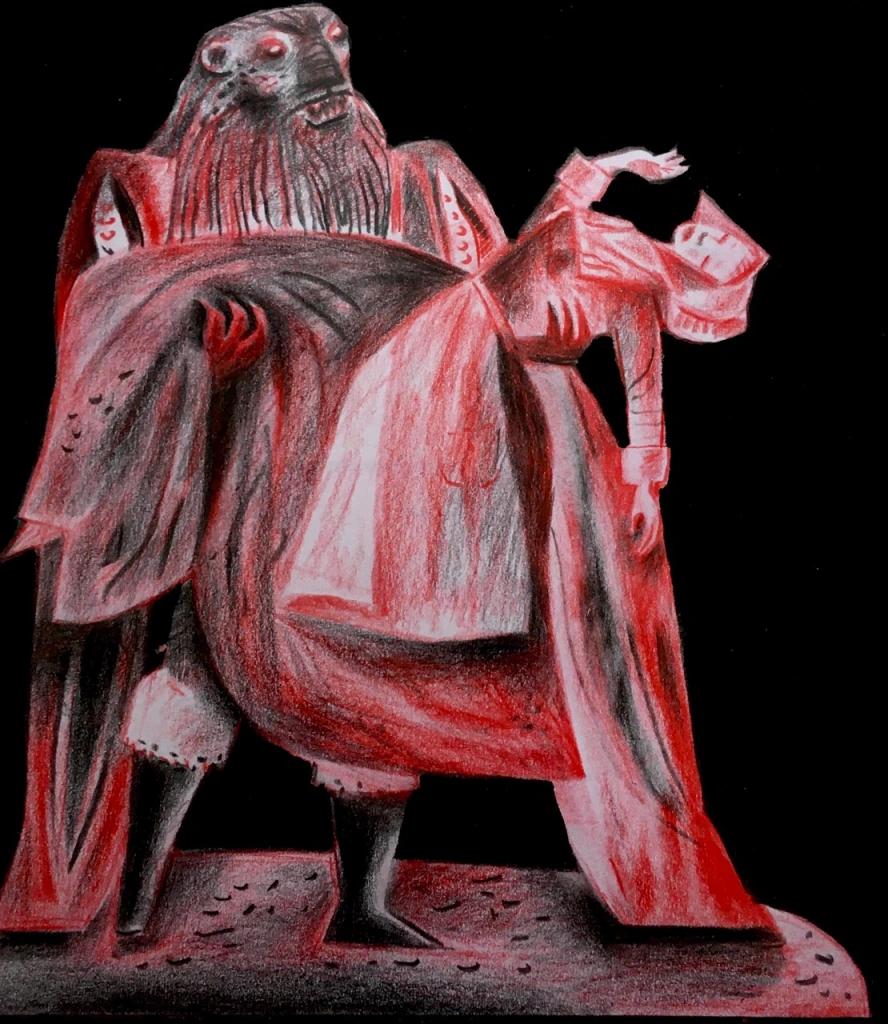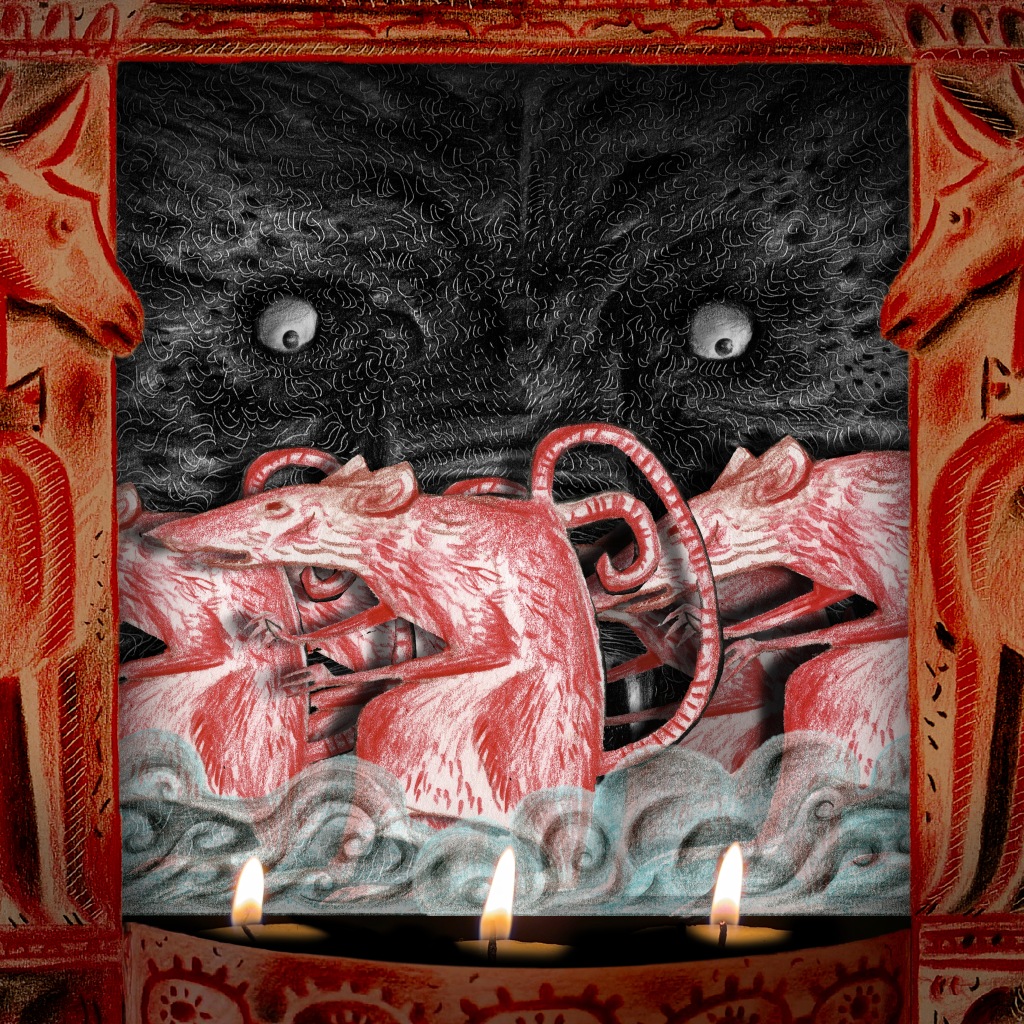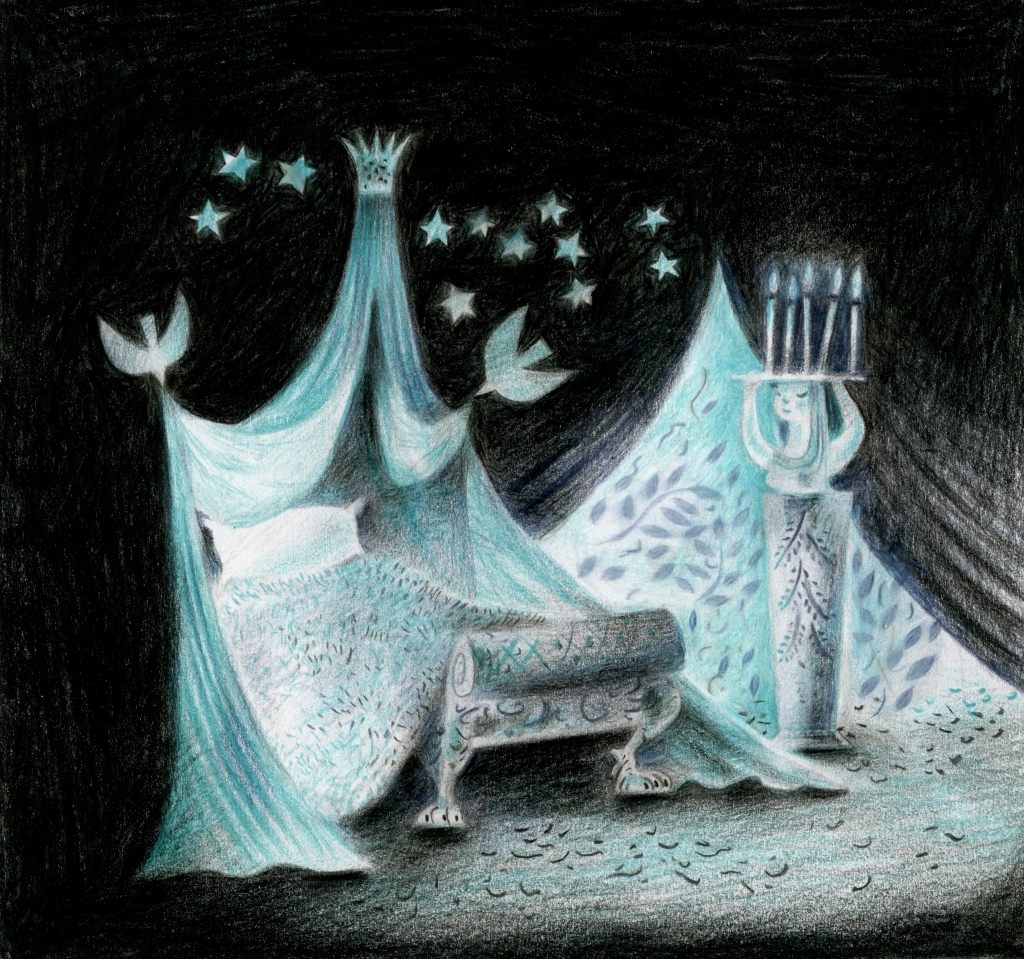
If you type Beauty and the Beast into your search engine-of-choice today, you’ll get the full, oppressive weight of the Disney empire over-stuffing your screen. But there is so, so much more to the story than the Disney products, and for that you have to search further, and search deeper.

La Belle et la Bête is a story that has captured imaginations since its first appearance in 1740 in a lengthy version by novelist Gabrielle-Suzanne Barbot de Villeneuve. Abridged and rewritten in 1756 by Jeanne-Marie Leprince de Beaumont, it was later taken up by Andrew Lang in his Blue Fairy Book, and from that time on it has been constantly retold and redeveloped, spanning novels, short stories, operas, plays, musicals, films, animations and live-action remakes of animations.
Cocteau based his screenplay on the version of La Belle et la Bête by Leprince de Beaumont. I in turn am homaging Cocteau in my current project with Design for Today to take the mood of a film and translate it to the quite different language of a book.

It seems strange that such a magnificent subject has so often resulted in unconvincing illustrations, but among the numerous published versions I’ve found there to be a relative few that come close to capturing the strangenesses of the story. Walter Crane created admittedly eye-popping images (below) in which design takes precedence over character and mood, a common failing in versions of Beauty and the Beast. Crane’s Beauty looks not so much alarmed as filled with ennui at the dapper, monocled Beast who shares her sofa at possibly the dullest tea-party in the world. (Routledge, 1874) Perhaps he is both boar and boor!


Among nineteenth century illustrators, I find myself most drawn to the images of Eleanor Vere Boyle. Her Beauty and the Beast of 1875 (below) has a Beast like a giant beaver crossed with a sabre-toothed tiger, and he is both sinister and majestic. I love the cactus garden Boyle dreamed up as the perfect setting for his first appearance. It’s an unexpected masterstroke of imaginative contribution to the story. And while Beauty is conventionally lovely, at the dining-table she looks trapped, a prisoner both in the too-tight space and in the confining swathes of her gown. All this feels far more in the darker realms of the story than most versions.


H. J. Ford created a set of images for Andrew Lang’s retelling of the tale in The Blue Fairy Book, with a Beast notable for being a man/boar/elephant mashup.

Ford’s illustrations are awkward and oddly uneven in style and tonality. The best and the most touching by far is the one in which Beauty returns to find the Beast dying in a grotto.

…

Above: Illustrator Peter Thompson


I particularly like the illustrations of the story by Beauge Bertall. (Above)
The abiding failure of so many illustrators tackling the theme has been one of being wedded to surface allure at the cost of atmosphere and character. Artist after artist gets lost in opulence and graceful whimsy, and Beauty and her Beast sink beneath the weight of it. She becomes a cypher for all things pretty, and he loses his animal nature long before casting it off in that final apotheosis. It seems to me that Beauty has become a prisoner of her name so that artists find it an almost impossible hurdle to clear. She’s defined by the standards and fashions of her times, running the gamut from Pre-Raphaelite goddess to 1920s socialite to sophisticated siren without ever bothering to leave a trace of her character on the page. It’s a conundrum. How do you define beauty? Moreover when you do – if you do – how do you manage to get beyond it?

Above: Illustrator Jan Brett

Above: Illustrators Janet and Anne Grahame Johnstone
 Above: Illustrator Warwick Goble
Above: Illustrator Warwick Goble

Above: Illustrator Errol le Cain
Angela Barrett’s Illustrations (below) for Max Eilenberg’s 2010 Beauty and the Beast (Walker Books), are are undeniably beautiful and perhaps the most eerily romantic of contemporary versions. She presents dreamy, meticulously painted wide panoramas that invest an almost operatic quality to the undertaking, and if I have a qualm it’s that I can’t escape the feeling that the images have been made with the stage or film in mind, and that is where they’d look their best.


The illustrations for Beauty and the Beast that I love most, appear in:
Favourite Fairy Tales Told in France
Retold from Charles Perrault and other
French storytellers by Virginia Haviland and Illustrated by Roger Duvoisin.
Published by Little, Brown and Company, 1959
Roger Duvoisin (1900 – 1980) was born in Geneva. He studied at the École National Supérieure des Arts Décoratifs in Paris, and after graduating tried his hand at a variety of practices, including designing scenery, creating posters and painting murals. In 1925 he married another Swiss national, the artist Louise Fatio. In 1927, while working in Paris in the textile industry, Duvoisin was offered a job designing for a textile company in the USA, and the couple relocated to New York. When the company went bankrupt during the Depression, Duvoisin turned to illustration to support his family.
In 1933 he had great success with his book Donkey, Donkey, and he won the 1948 Caldecott Medal for his illustrations for White Snow, Bright Snow by Alvin Tresselt. In 1954 he collaborated with his wife on The Happy Lion. Fatio wrote the book and Duvoisin illustrated it, and it proved successful enough to extend to a total of ten Happy Lion books which they jointly produced over twenty-six years. He illustrated Favourite Fairy Tales Told in France in 1959, and for me his achievement is a triumph.
The images throughout are fresh and lively, flat and graphic, and while they don’t rely on creating characters in the way we might expect of say Maurice Sendak, they nevertheless make good that deficiency by fizzing with energy and shapely loveliness. With their limited yet vibrantly sunny palette, they are wonderful accompaniments to the tale. I think too that by stripping him down to his natural animal shagginess, Duvoisin rids his Beast of all the pesky trappings of affluence that many other illustrators linger on. This Beast is man, bear and werewolf combined. He fills the space with physicality and presence, and when he roars, he ROARS!!!!
I can see Duvoisin’s origins as a textile designer in these images, and the energy and freedom of the 20th century, wedded to the most artful drawing craft, flows through them. They make me happy. Beauty and the Beast is just one of several tales in the book, and these are the illustrations for it.




Throughout a long career Duvoisin was an ardent and steadfast collaborator, producing an astonishing nineteen books with Alvin R. Tresselt, five with Mary Calhoun, four with Charlotte Zolotow and three each with Kathleen Morrow Elliott and Adelaide Holl. He also produced a series of books based on his creations Petunia and Veronica, respectively a goose and a hippopotamus. He received a Caldecott Honour in 1962. I leave you with another image from Favourite Fairy Tales Told in France, this one from the story of Puss in Boots. It has to be the best Puss ever!

…

























































































 Above: Illustrator Warwick Goble
Above: Illustrator Warwick Goble






